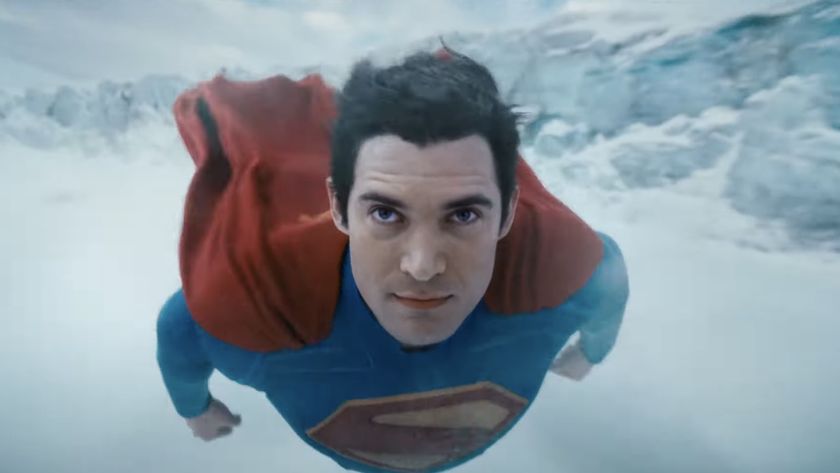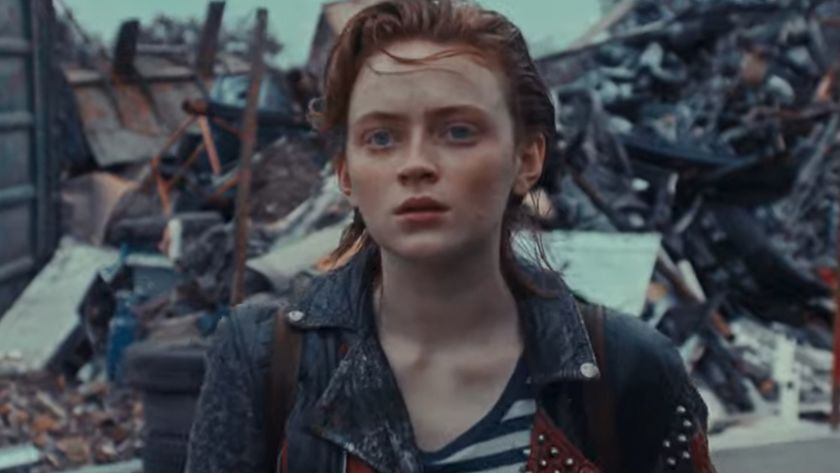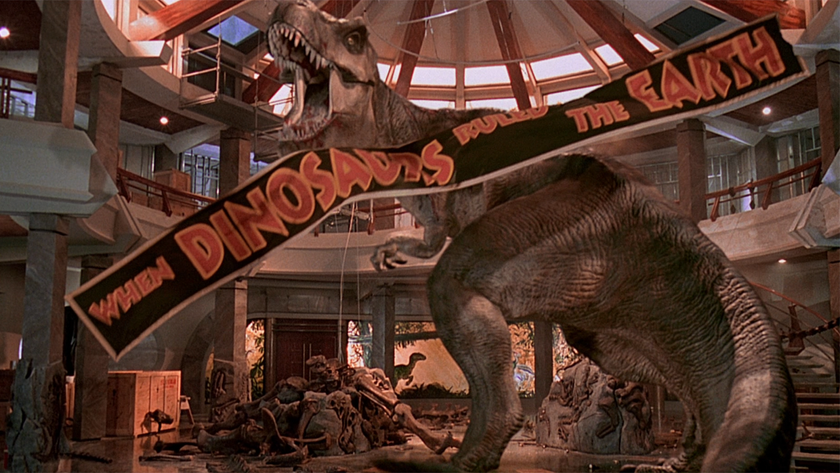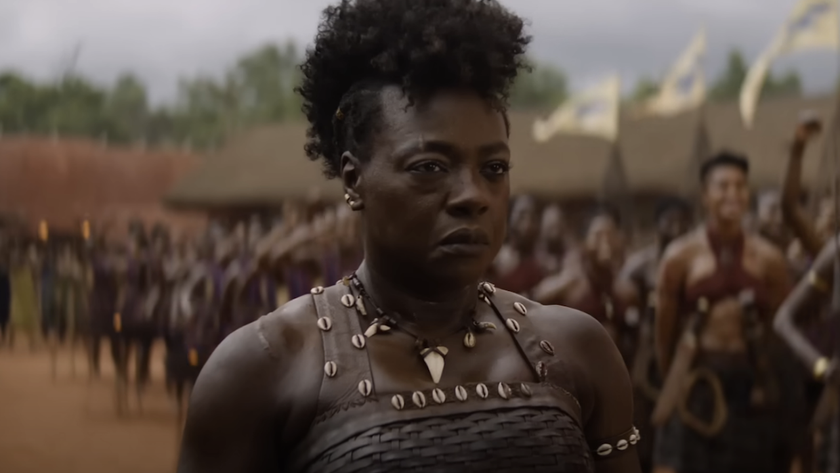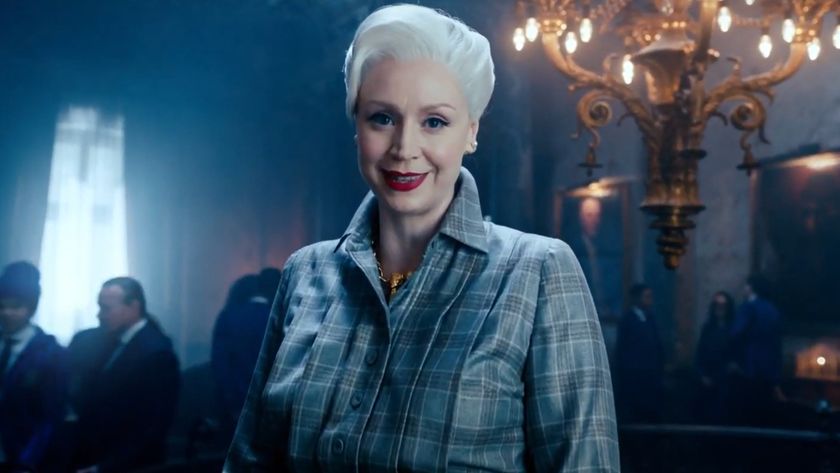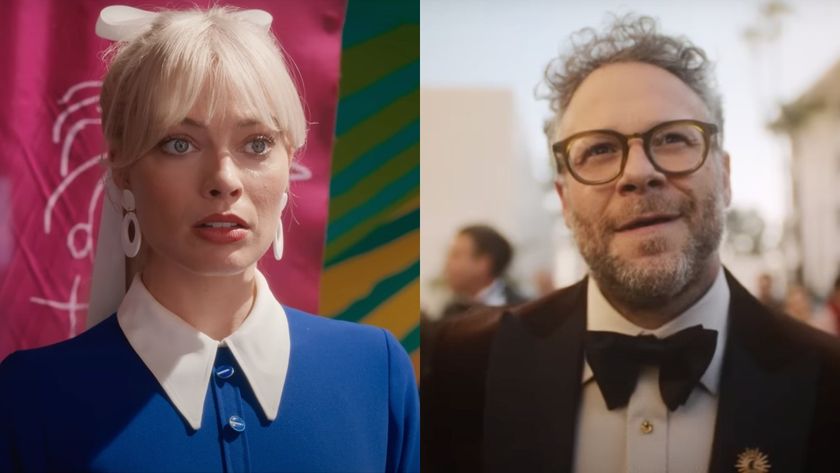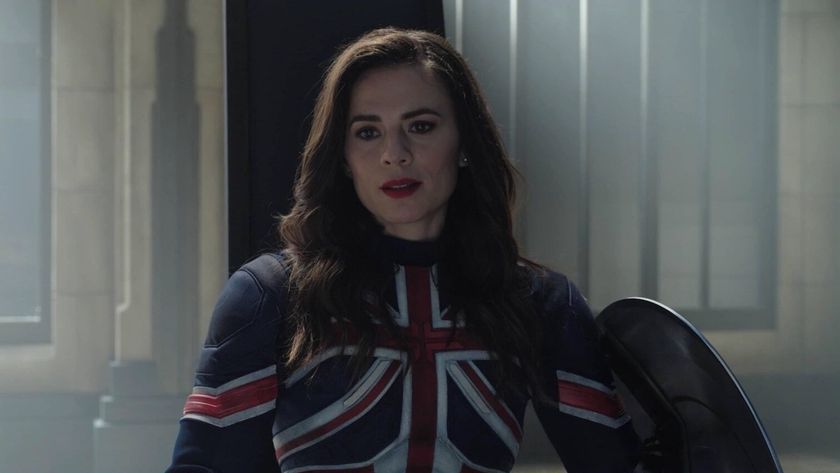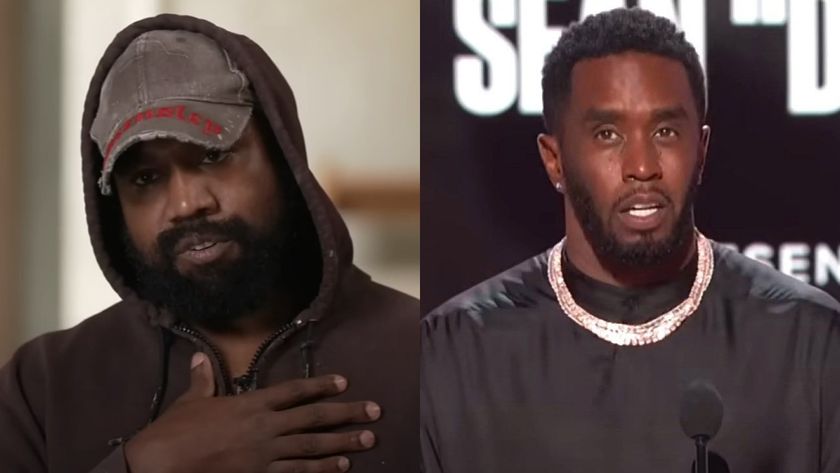Star Trek Beyond: An Inside Look At Simon Pegg And Doug Jung's Race To Deliver A Spectacular Sequel
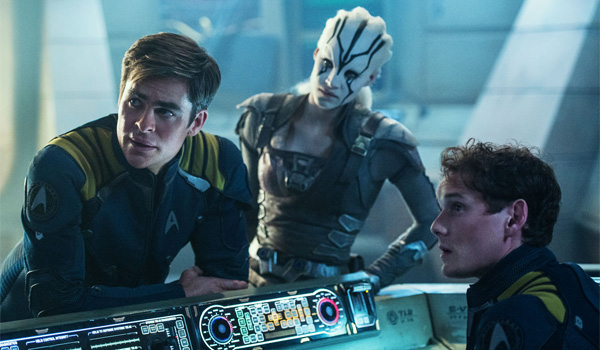
In late May of 2015, actor/screenwriter Simon Pegg was quoted saying something that both surprised and worried fans anticipating the upcoming sci-fi sequel, Star Trek Beyond. After having been working on the script for the blockbuster with co-writer Doug Jung for a few months at that point, Pegg revealed that they had only just turned in their first draft four weeks before production, and that they still needed to shave a whopping 45 pages off before it could be considered ready. It was a monumental task, especially with a set anniversary-adjacent release date looming, but in truth, that was only part of the pressure cooker pre-production phase that led to the creation of a spectacular Star Trek movie.
Late last month, in advance of Star Trek Beyond's arrival on home video, I had the pleasure of sitting down one-on-one with Doug Jung in Los Angeles' famed Griffith Observatory, and the primary subject of our conversation was the race he ran in tandem with Simon Pegg to complete the script for the film and have it ready in time to sync with the franchise's 50th anniversary. It was a creative endeavor that transpired for the writers over the course of just a few months, beginning in early 2015. And it's a great window into Hollywood's crazy, creative process.
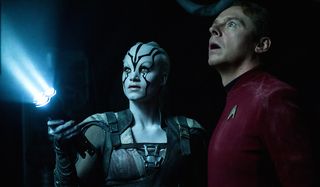
The Crazy Pressure To Write The First Draft
Doug Jung and Simon Pegg weren't the original writers hired to pen the screenplay to what was originally referred to as just Star Trek 3, but instead didn't officially come aboard until late January 2015. Initially, the task of putting the sequel together had been given to reboot series writer Roberto Orci and the team of John D. Payne and Patrick McKay. Orci was looking to make his directorial debut with the blockbuster as well, but his version of the project seemingly went away when he parted ways with the production in December 2014.
As a result, Paramount Pictures and J.J. Abrams' production company Bad Robot gave the team of Doug Jung and Simon Pegg a clean slate to work from. While many screenwriters in Hollywood would surely envy this kind of creative opportunity on such a massive franchise film, the true enemy of the whole process reared its head early: time. As Jung described,
All the stuff that happened between [the beginning of the year] and actually shooting is all the stuff you normally go through on the creative process - the endeavor of trying to produce something creative with a lot of people involved. But we just had a third of the time to do it than you normally would!
The clock on the production was constantly ticking, and while Jung and Pegg were continually working alongside director Justin Lin and the producers to crack the exact story that they wanted to tell, they also felt the pressure of every day going by putting them just a little bit further behind schedule. When I spoke with Simon Pegg at the Star Trek Beyond Los Angeles press day earlier this year, he described what it was like in very visual fashion:
It was a question of just writing everything down. There's a room that has white boards all the way around it, and we filled every single one of them, and gradually began to pick the right stuff. And then it gets smaller and smaller and smaller, becomes more refined and more detailed.
It eventually got to the point where they had to stop just coming up with ideas and start making decisions. They had to get a draft done so that they could show the heads of the various and numerous production departments what needed to be made, built, and constructed. Given that they were making a movie set entirely on spaceships and space stations with literally 50 different kinds of new aliens, there were incredibly important deadlines that needed to be met.
With time dwindling, it was at this point that Doug Jung and Simon Pegg just needed to get away from everything. While they had managed to construct a detailed outline, and knew what they were doing, Star Trek Beyond only existed in that state. With just a matter of weeks available to them to get the first draft done, Jung traveled to England and while working from Pegg's home, they started putting their ideas in script form. Said Jung,
CINEMABLEND NEWSLETTER
Your Daily Blend of Entertainment News
It was the first time that we had spent really, truly alone. And we were in London at Simon's place, in his beautiful home with nature and things going on outside that had nothing to do with Star Trek. I always talk about this time as one of the most productive, where we were able to just sit down and put out pages; and we put pages, and pages, and pages out.
It was certainly the proper time to find motivation and be incredibly productive -- and it helped that Doug Jung and Simon Pegg were totally living and breathing Star Trek during that time. After long days of churning out pages and putting together what would be the first draft of Star Trek Beyond, how did they reward themselves? By watching an original Star Trek episode or one of the previous movies.
They managed to get the draft done in time, but this was still very far from the end of the process. While Doug Jung and Simon Pegg were high-fiving each other and were crazy happy that they actually managed to write the script they wanted to make, it wouldn't ultimately be the script that director Justin Lin would capture on camera. Their first go-round with Star Trek Beyond produced a crazy-long 170-page screenplay, and once again the writers found themselves in a position of serious pressure trying to cut it down.
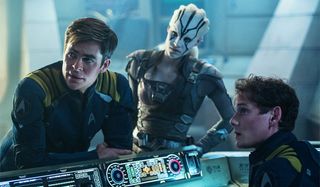
How They Managed To Cut 45 Pages In Four Weeks
It's been found that one page of a script roughly averages to about one minute of screen time in a movie, so clearly the first draft of Star Trek Beyond that Doug Jung and Simon Pegg had written wasn't production-ready (to quickly do the math for you, it would have required the sci-fi sequel to be just short of three hours long). Of course, as experienced writers, both Jung and Pegg already knew this. The first draft was purely the completely unfiltered movie that the filmmakers had talked about making, and a wide assortment of factors -- from budget to runtime to repetitiveness -- would enforce the need for certain cuts.
Fortunately, there were some clear spots in the script Jung and Pegg had written that could easily be cleaned up and shortened. One thing Jung told me was featured in the initial draft was simply too much unnecessary exposition. The two writers had been communicating ideas together and then putting those ideas directly down on paper, but in certain instances it was stuff that the blockbuster just didn't need:
We had a lot more exposition. I don't know if Simon would agree with this, but I think we were communicating not only our thoughts on to paper, but to each other, and together, and to other people, and once you sort of start to vomit all that up, you go, 'Well, you don't need that, you don't need that, you don't need that.'
Not helping things was the fact that the process of cutting the script down didn't afford Doug Jung and Simon Pegg the opportunity to work as closely together as they did while they were putting Star Trek Beyond's first script together. Instead, Pegg remained in England, while Jung worked from his home in Los Angeles. The big time zone difference didn't make things easy for the two writers, but evidently Bad Robot didn't really mind it, because theoretically Pegg and Jung could be working individually for a combined 24 hours a day.
Because of their geographical separation, the two filmmakers were basically giving each other assignments -- taking certain sections of the script and reducing them, before sending the edits back to the other writer. This process went on back-and-forth in the tight four weeks before the start of production, and it didn't help that they ran into some highly stressful technological issues along the way as well. Doug Jung recounted one particularly memorable story as he was personally flying up to Vancouver, Canada for the start of Star Trek Beyond's principal photography:
This is funny -- I was about to go to Vancouver, and I remember that we had to cut all these pages out. I left my office at 11:30 my time, maybe midnight -- which I guess was early in the morning for Simon. And I was supposed to take a pass and cut out pages, and I sent him a document, a Final Draft document, and I either sent him the wrong one, or I don't know what happened. He texted me, 'Are you serious? One page?' And I literally almost drove off the road. I stopped, I pulled over, I pulled out my computer. And then we found out that his computer, and the Final Draft version he was using, a different version, it just did something weird. So things like that would happen constantly.
The way Doug Jung told me about the editing process for Star Trek Beyond's new drafts, I got the sense that most of what wind up getting cut out was filler stuff that would have potentially dragged the movie down. That being said, he did tell me about a few things that wound up not making it into the finished film that would have been fun to see and cool additions to what already exists. Read on to find out what they cut.
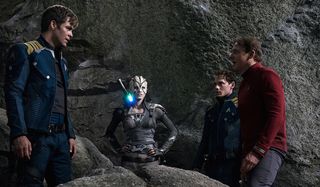
The Great Stuff We Missed Out On
One of the greatest elements of Star Trek Beyond is the way in which in breaks the crew of the U.S.S. Enterprise into separate pairs of characters, who have to play off each other while trying to survive on a mysterious alien planet. The duos are a fun mix of perfectly matched and unexpected -- but when I spoke with Simon Pegg and Doug Jung during the blockbuster's Los Angeles press day prior to the film's release, they both clearly expressed their favorite of the groups: Karl Urban's Bones and Zachary Quinto's Spock. The two characters have polar opposite personalities, and it results in some wonderful moments for both of them in the film. What you probably don't know is that the first draft of the movie featured a whole lot more of them.
While talking with Jung at the Griffith Observatory, he told me that the first scene between Spock and Bones was originally built up to be a whole lot longer, and was going to be a lot more advanced. It ultimately had to be cut down for both time and budget reasons, but based on what the co-writer told me, it sounds like it would have been fantastic.
We were having so much fun with certain scenes and certain storylines. Spock and Bones. The first scene we wrote I think was like 15 pages. If we took all of that out it probably would have been its own movie... If I read those pages to you, you would be like, 'What?!' The chase they have before they get caught went on forever. We talked about so many things. We had alien creatures coming out, all this tons of crazy stuff, which would have been fun, but just wasn't feasible.
The edits that Doug Jung and Simon Pegg made to the sequence still made the Spock-Bones stuff play perfectly in the finished cut of the movie, and Jung told me that the process never really resulted in them killing any proverbial darlings. That being said, there were certain character-driven moments and sequences that he would have loved to see be included, but he always knew never would be.
One example of this that the co-writer provided was more time with Sulu (John Cho) and Uhura (Zoe Saldana), who spend a good bulk of the film as prisoners of the villainous Krall (Idris Elba). The first draft of Star Trek Beyond gave them a bit more of the spotlight... but it was also one of the first things to go in rewrites:
There was one scene that I liked with Sulu and Uhura, and it was kind of an off-story point, but you just kind of heard Sulu express a bit more about his family and the concern they had. And it was just one of those nice moments between characters who we don't see normally get that kind of moment. And, of course, as you write it, you're like, 'That's the first thing that's probably going to end up going' for all these different reasons.
Given that Doug Jung actually cameos as Sulu's husband in Star Trek Beyond, I prodded him about the scene, asking if it was an attempt to give his character a bit more exposure, and he replied, laughing,
I wasn't [playing him] at that time! I wasn't trying to preserve more screen time. But it was sort of moments like that, character moments, funny bits that just don't add to the collective story.
In a fraction of the time that most blockbusters have, Doug Jung and Simon Pegg were able to successfully outline a script, turn it into 170 pages of work, and then edit it down to a workable piece that could be put in front of cameras. On paper, that's certainly not what appears to be a recipe for success, but looking at Star Trek Beyond in its finished form, it became one.
Star Trek Beyond is now available for purchase on Blu-ray, DVD, and digital home video.

Eric Eisenberg is the Assistant Managing Editor at CinemaBlend. After graduating Boston University and earning a bachelor’s degree in journalism, he took a part-time job as a staff writer for CinemaBlend, and after six months was offered the opportunity to move to Los Angeles and take on a newly created West Coast Editor position. Over a decade later, he's continuing to advance his interests and expertise. In addition to conducting filmmaker interviews and contributing to the news and feature content of the site, Eric also oversees the Movie Reviews section, writes the the weekend box office report (published Sundays), and is the site's resident Stephen King expert. He has two King-related columns.
